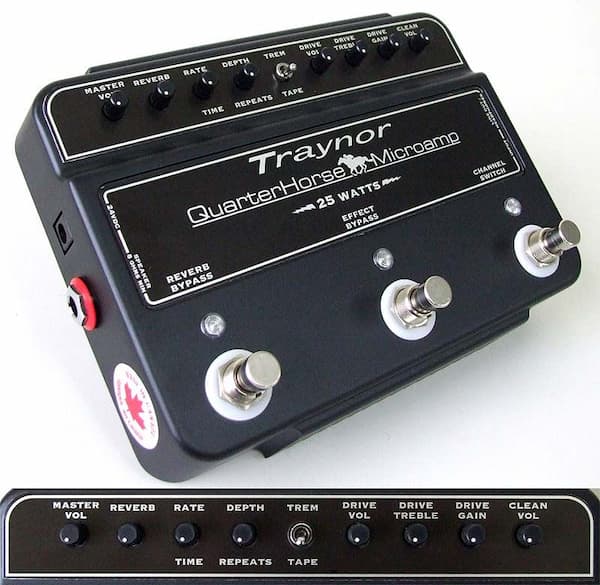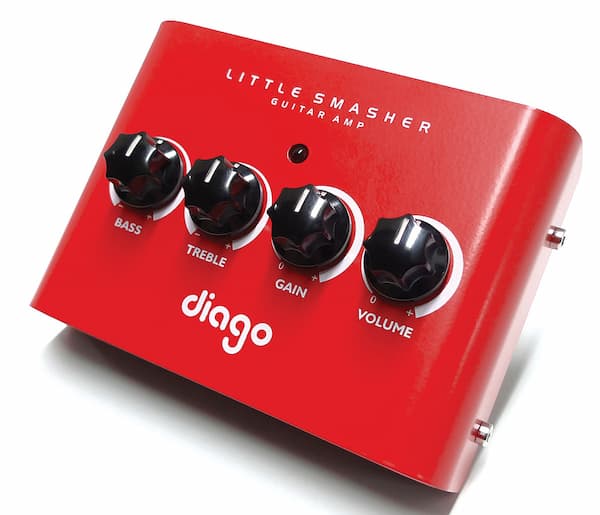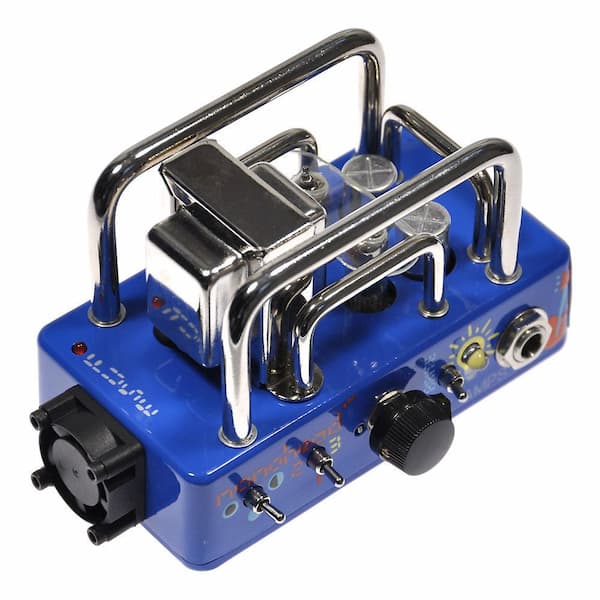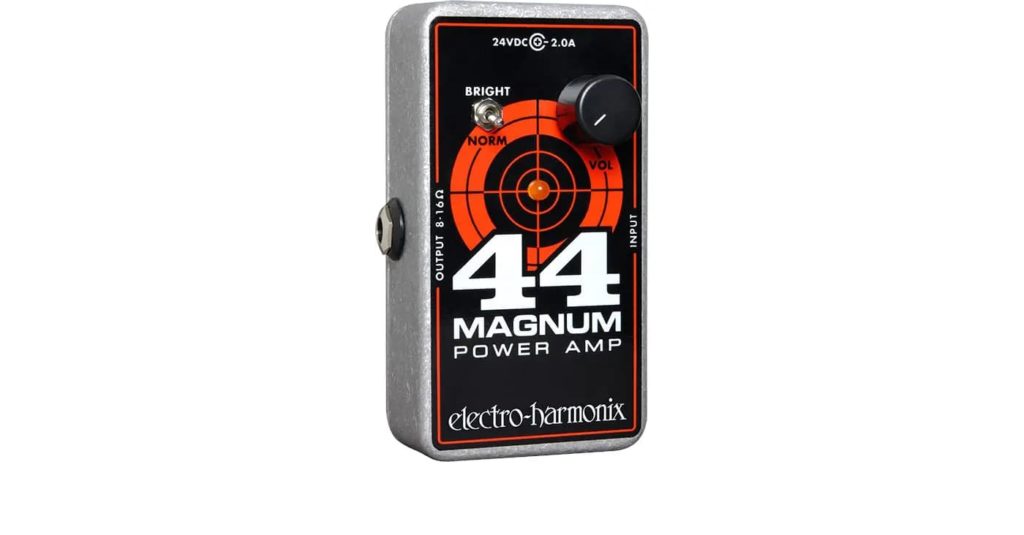Most electric guitarists know that having to carry a large amplifier around when travelling to gigs and rehearsals can be annoying and as the years go by the sentiment only grows stronger, as lower back problems can become an issue because of protracted “amp shlepping” starts emerging.
Luckily for modern guitarists, the ongoing trend of circuit shrinking has been making it increasingly possible to fit a powerful amplifier inside increasingly smaller enclosures – as small as stomp boxes.
The EHX 44 magnum is great when you need to travel as light as possible, but need more of a kick than a small-wattage combo can deliver, the 44 Magnum and a small cabinet is more of a cost-effective and super-portable solution. Not only is it great if you’re working with a lower budget, it’s defiantly a great piece of insurance for touring or gigging musician. All you need to do is throw the tiny 44 Magnum into your cable bag and you’re done with worrying about a failed amp forever. Are there any other small power amplifier that can compete with the EHX 44 magnum?
In this article, we’ll take a look at some potential alternatives for the EHX 44 magnum.
Traynor Quarter Horse 25-Watt Micro Amp

Traynor has made a completely unique micro Stomp box amplifier, which is a true two-channel 25-watt guitar amplifier that comes in an ultra-compact stomp box format.
The Traynor Quarter Horse is perfect for rehearsals, small gigs, recording and convenient practice, the Quarter Horse amp delivers a full, uncompromised feature set in a package that literally can ride to the gig in the pocket of any standard guitar case or gig bag.
Traynor’s two-channel design delivers clean and lead tones. Its channel controls include clean volume, drive gain, drive treble, and drive volume. The micro-toggle switch selects either tape delay or tremolo effects, with both effects having full control. It has three integrated footswitches, which allow for quick one-touch channel selection, effect bypass or reverb bypass.
The micro amp has a standard 1/4-inch phone jack output allowing a simple direct connection to any typical 8-ohm guitar cabinet. It has an additional 1/8th-inch output TRS headphone jack, which doubles as a stereo line out for recording or private practice.
Diago Little Smasher

The Diago Little Smasher is easy to transport, capable of natural distortion at lower volumes compared to some of the higher-powered competition and can often still be plenty loud enough for small gigs and rehearsals.
Powered by a supplied nine-volt adaptor, the Little Smasher is an extremely solid little unit with casing built from two interlocking pieces of 2mm/14-gauge fabricated carbon steel.
On the back panel, you’ll also find a standard jack guitar input and a speaker output that can drive speakers of between 4 and 16 ohms up to the size of a 4 x 12.
The face of the unit has four knobs which control the sound, so as well as gain and volume it gives active treble and bass tone controls, each of which supplies up to 15dB of boost and up to 30dB of cut.
Using the Diago Little Smasher for playing small gigs can work if you play with a certain degree of distortion (there’s not a lot of clean headroom before the sound starts to break up), although competing with a drummer may be quite difficult. However, there’s nothing to stop any cab driven by the Little Smasher from being mic’d up through a PA.
Putting the volume aside, the unit is nicely responsive and capable of a wide range of tone, from sparkly clean to crunchy Marshall-esque sounds, which are delivered courtesy of four analogue-modelled cascading gain stages and, considering that it has just two knobs, a highly versatile EQ with a nice line in low-end thump.
Let’s say you own a Marshall stack but can’t really use the full rig to practise at home because of volume issues, or can’t achieve useful overdriven sounds at low levels, the Little Smasher could come in very useful.
Because of its ability to let guitarists practise with a decent sound at tolerable volumes without resorting to headphones, a unit like this may just be worth its asking price.
Like the other units mentioned its greatest virtue is its portability: The little Diago Little Smasher can easily slip into a coat pocket or guitar case, perhaps doing the business at a gig where speakers are provided, but where you don’t have the transport available to take your usual amp.
It could also be an essential part of a guitarist’s gigging first-aid kit – always on hand to step in to replace a broken amp head or a combo (if you pack a lead that can connect the combo’s speakers).
Having equipment like the Little Smasher fixed to your pedalboard or stowed in your gig bag could be a very smart move.
Z.Vex Nano Head

Capturing a thunderous drive sound in the studio isn’t always easy to achieve. The sound pressure that’s generated by a valve stack can play havoc with microphones, producing harsh results. Enter Zachary Vex, the stomp box veterans responsible for some of the most ingenious designs of recent years.
Rated at one half-watt and integrated into a pedal housing, the Vex Nano Head is one of the world’s smallest production valve amplifiers. With its twin JAN-6921W military spec valves, mini transformer and cooling fan, the Vex Nano Head is built exactly like a grown-up amp, and even sounds better than most.
Even when using a budget condenser mic, you’ll be surprised by the authenticity of the recorded tone: a truly exceptional high-gain sound full of harmonic complexity and bags of raunch, sitting perfectly in a mix without the need for outboard EQ.
With your eyes closed, it’s hard to believe that such a huge sound is really coming from this unit.
